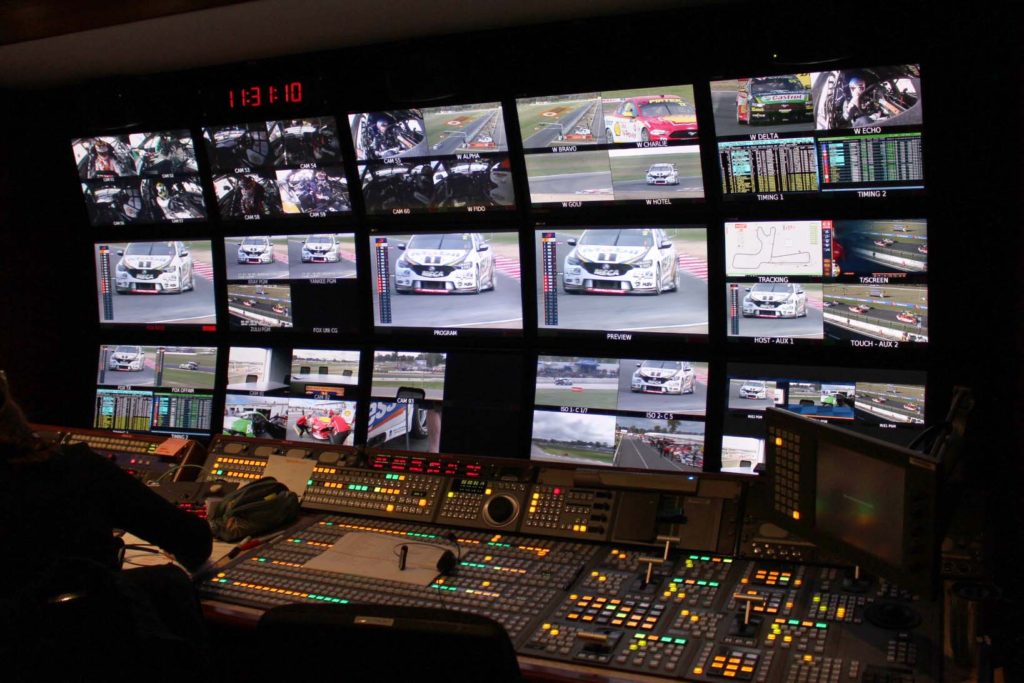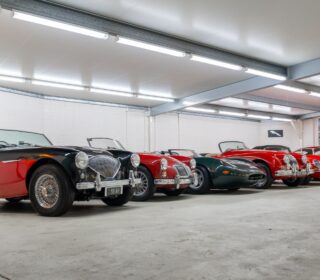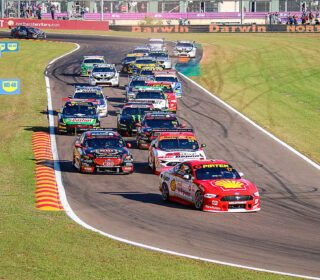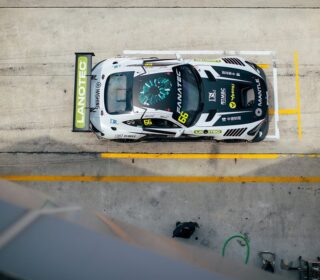BROADCASTING THE SPORT
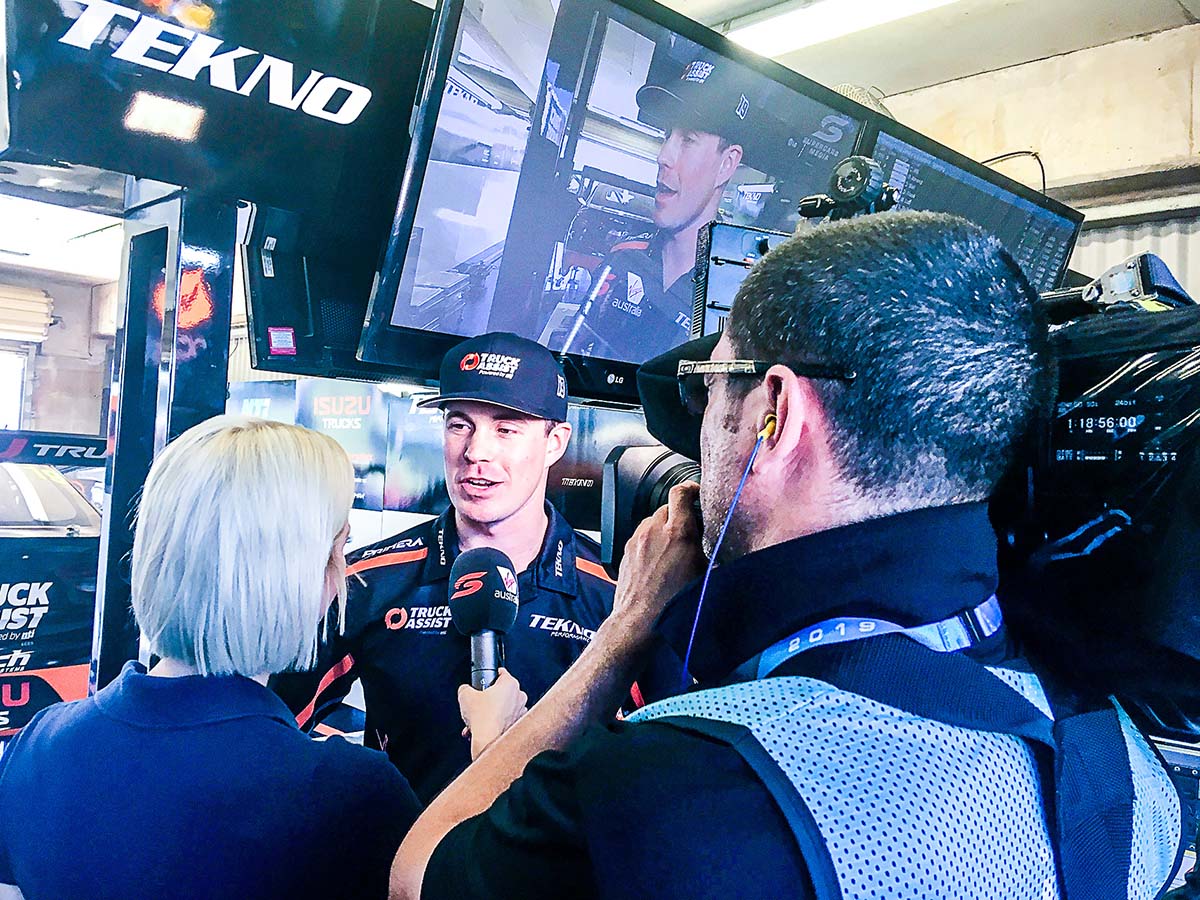
AUSTRALIA has always punched above when it comes to covering Motorsport, from the famous Channel 7 days at Bathurst to Nine’s Grand Prix broadcasts and Ten’s push to bring Supercars into the limelight. It’s still happening, too, as DALE RODGERS found out when he sat down with the people behind Supercars TV.
WORDS: Dale Rodgers IMAGES: Mark Walker, Dale Rodgers
“Cut to Larko – he is going to interview Tim Slade” calls the director’s voice from behind the control desk. Mark Larkham fires back that Slade has gone straight though the BJR garage to the transporter, so the instruction is switched to Riana Crehan to get ready with AmorAll Pole Sitter Award winner, Scott McLaughlin, for the presentation.
“OK, Riana, 90 seconds. We’re just rolling up the in-car of Scott’s pole lap. Stand by” the instruction follows.
Supercars General Manager of Television, Nathan Prendergast and his close knit team are in their element. This interchange has been but a snippet of the frenetic pace which has been running the whole of the knockout Qualifying Session at Round 6 of the 2019 Supercars Championship at Winton.
The Race Torque is embedded in a mobile studio which would look just at home in a major TV studio in Sydney or Melbourne. We are in a strange and darkened environment surrounded by around a dozen producers, audio and vision programmers and a wall of TV monitors in what is effectively, and what looks from the outside, a race car transporter. It is quite surreal that not only are we in the middle of North East Victoria, but less than 50 metres from this production studio on wheels, Supercars are blasting past on track at around 235kms as they head to Winton’s Turn One.
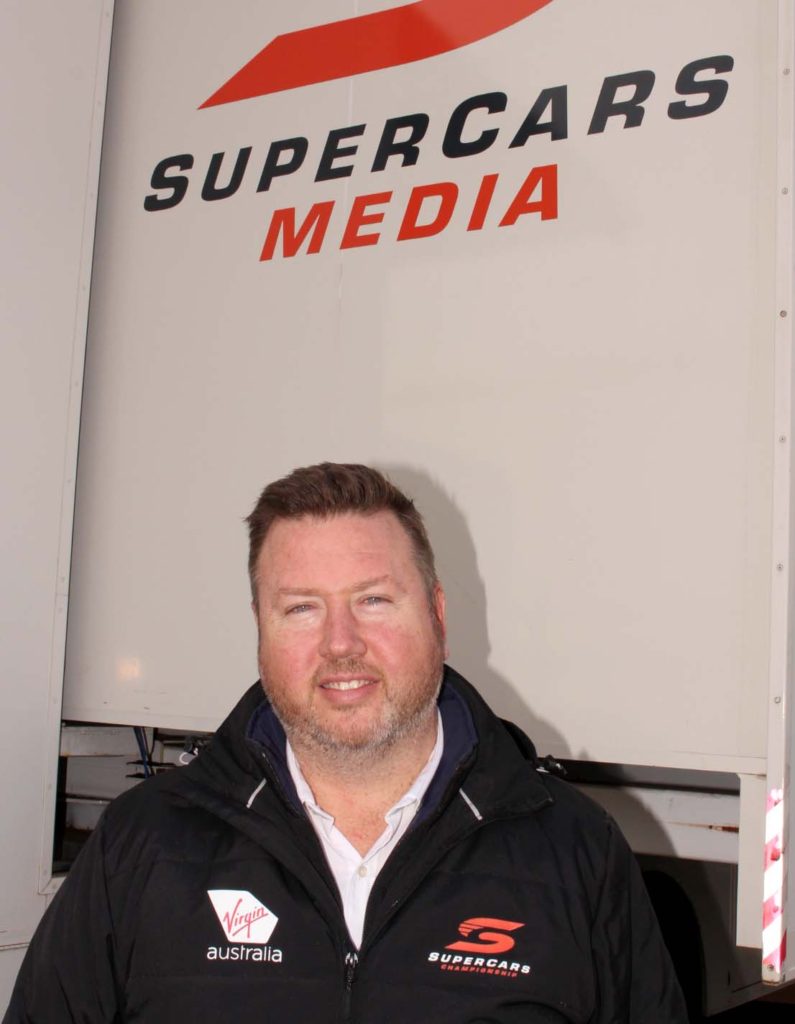
So how did broadcasting of Supercars we arrive at this point?
Supercars Television was formed in 2007. Taking control of TV production and working with broadcast partners on the provision of content is a normal practice for many sports today, but a Supercars decision some twelve years ago to form the broadcast unit was a pioneering move in Australian sports broadcasting.
Nathan Prendergast takes up the story.
“Supercars is lucky to be one of few sports which produces its own content. It differs from the ball sports such as AFL and NRL which sells the rights to a network, which in turn goes and makes the product. Supercars Media was formed back in 2007. It was a bit of a visionary idea back then and essentially we make the content for the rights holder. That is done in various ways. There is the World Feed, which is what our international clients take. It is a self-contained product. It has commentary, graphics and everything ready to go to air and then there is the unilateral package which are all the hosting that happens locally. Traditionally other sports may have made that ‘World’ content but it was up to the networks to make and insert their own content, including the hosting and all the other parts of a telecast,” explained Prendergast.
“The unique thing about Supercars Media is that we not only make all the racing, all the world feed and the content for FOX, we also produce the unilateral feed for partners as well. In the first year of the agreement they decided to produce that (non racing) component themselves but by the end of 2015 it was clear that there was repetition, some of the messaging was not getting carried over from what we were producing, then handing over to FOX for them to add further content, was not working. So it was agreed that the best way to handle it was that Supercars Media should handle all of it in conjunction with FOX.”
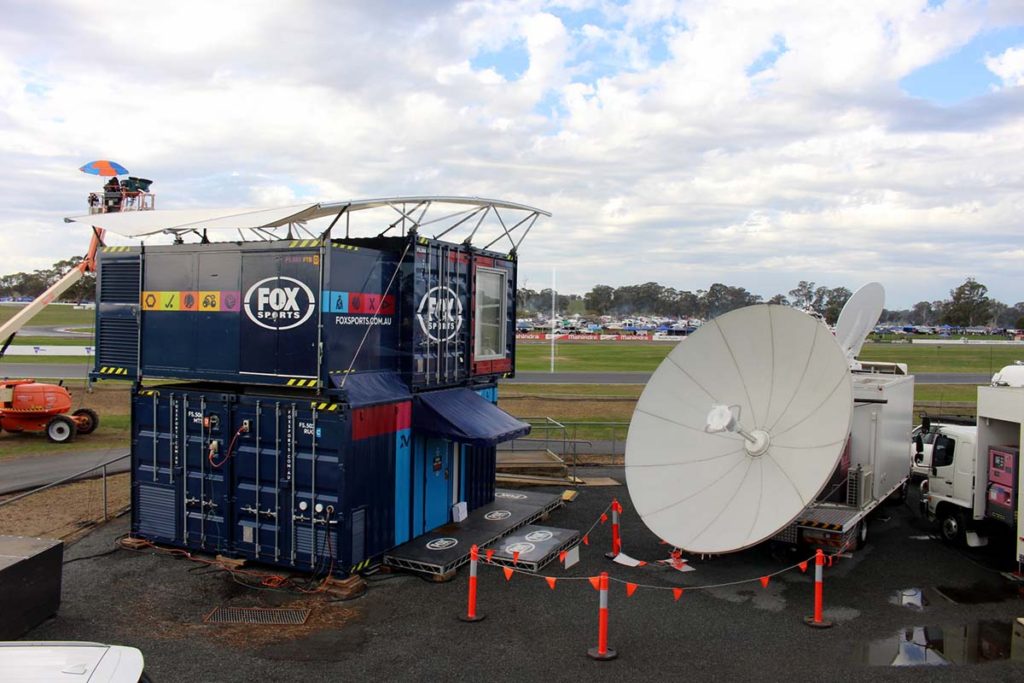
The delivery to Network 10 is also provided by Supercars Media and content is supplied for Ten to drop in their own on-camera presenters and break out stories.
The production team from Supercars Media and crew attends every Supercars round, however the biggest task of the year by far is the Supercheap Auto Bathurst 1000. The multiple Logie Award winning production of Australia’s Great Race is one of the largest undertakings in sports broadcasting in Australia and indeed the world.
“There are 350 people working at Bathurst. If you add up all the tack cameras, specialty cameras, in car and helicopters, there are over 120 (cameras) that go into making up the broadcast. As a director, which was my former role, it is one of the largest sports productions you will ever see in Australia,” says Prendergast. “It’s not like the Australian Open Tennis which has play on multiple courts and all the build-up and technology in play builds up over two weeks. This is one day, one race, one event where the focus is. Yes, Bathurst runs for four days, but the total focus is on the 1000km race.”
Nathan is quick to add to this that he believes that the crew behind Supercars Media is one of the best in the land. Longevity plays a key role in supporting this opinion with tenure of many of the behind the scenes technical people spanning some 17 years plus. Incredibly, senior cameraman Ian O’Brien has done 44 Bathurst’s! He notes that key success factors of the production are not only this longevity but the passion each and every person in the crew brings to the race tracks.
The need to innovate also is top of mind for Prendergast.
“The key is to ensure that we make the cars look as fast as possible. It is also about improving the angles around the track. Brian Forshaw, who came on board in 2018, is now starting to look at the camera plan to see where we can improve. It is all about ‘are those cameras in the right spot, is it adding to the coverage and how do we highlight the cars going faster?’ The difference between watching live at the circuit and watching on TV is the cars look slower on TV, so for us we are always thinking about putting speed shots somewhere new or different,” Prendergast outlined.
The elevation to General Manager of Supercars Media was not initially a comfortable move for Prendergast. From 2009 until 2017 he was happily in the Director’s Chair, but when Simon Fordham resigned, the search for a new GM firstly looked externally then focused in on a promotion for Nathan.
“It is not often you get an opportunity to do something like this is an area you know so well. It was important to me the crew were comfortable with the move, so here I am in year two and really enjoying it!” he said.
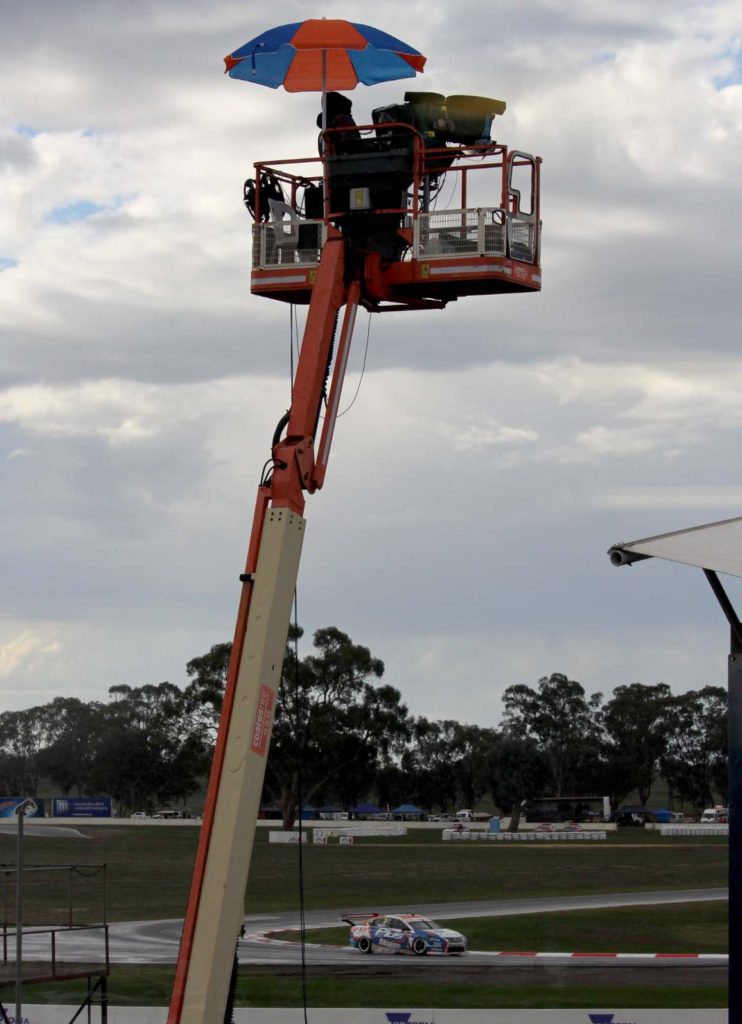
The broad range of talent and expertise Prendergast works with includes a hugely credentialed on air team, with Neil Crompton a key plank in that team. With uncanny timing just as we began to discuss this area of the telecast, Crompton walks into Prendergast’s office offering the perfect segway to the personalities in the Television production.
Crompton has been the face and voice of Supercars arguably since the categories birth in 1996. A former driver, media company owner, category manager and head commentator, his knowledge and understanding of the sport is second to none.
“I don’t hold any formal position in the management structure in Supercars Media, but I have been part and parcel of it in sense from since I stepped out of a race car at the end of 2002. Initially that was with Network 10, which then became the 7 Network which then became Supercars Media. Even pre dating that there was formal and informal roles with the 7 Network dating back to the mid 80’s. I guess I have longevity on my side and know the crew and a lot of the processes that go into the production,” Crompton outlined.
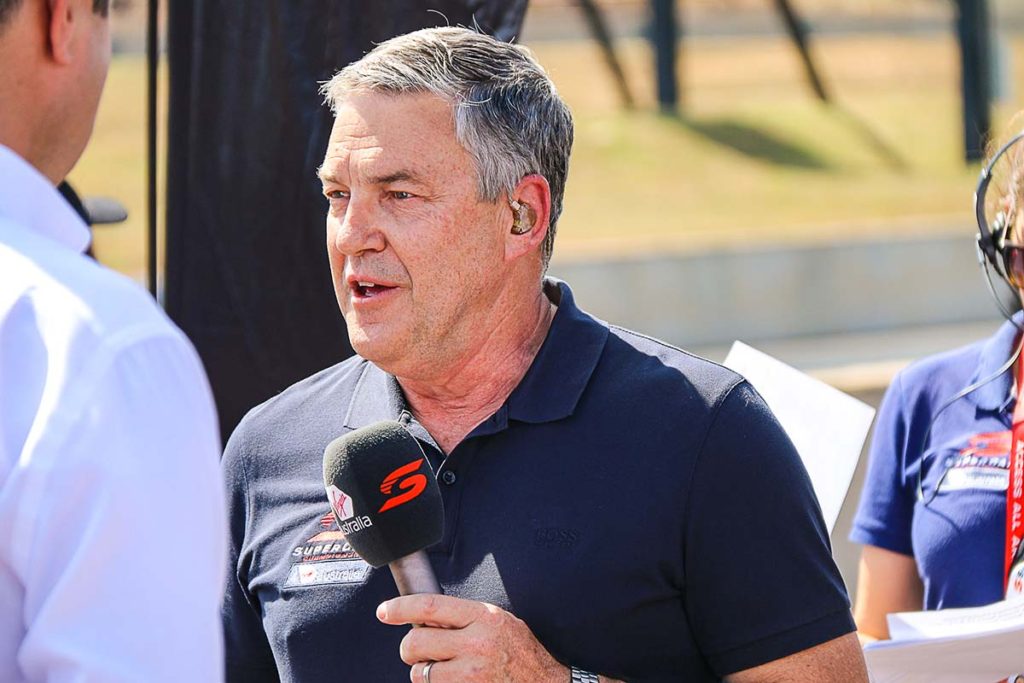
“On the other side of it I am involved with the Supercars Commission, I’ve been there seven years as someone pointed out recently, which is a an extraordinary amount of time. A lot of us in the industry, like yourself, have been coming to the race track every three weeks or so for what seems all of our lives. At some point you have your arms folded and say that you ‘don’t understand why they did this’, or ‘what is the rationale for that decision’…and it is very easy to be negative so I felt that it reached a point where it was appropriate to participate in some of the discussion. The opportunity arose so I grabbed it. I was a little bit worried when I first went into it with the potential of the politics of the sport to be too draining and how it could affect what happens from a broadcast standpoint, but I have them both quarantined and I don’t let either of them cross into each other’s world,” Crompton expands on his broad Supercars involvement.
There are few people who can chart the course of Supercars and Touring Cars broadcast history as articulately and as knowledgeably as Crompton.
From the red jacket era adorned with 7 pocket logo and collar & tie of the 80’s (remember him standing in the pits in the 1987 World Touring Car Championship round at Bathurst noting that a blizzard was now descending), to the chambray era of Network 10 to the contemporary look of Supercars in 2019, Crompton’s insights and on camera persona make him one of the broadcast’s great assets.
“I can distinctly remember in 1985 when 7 Network signed up to do what was then the Australian Touring Car Championship and Mike Raymond came down here to Winton. They didn’t have sufficient facilities or time to put together a full outside broadcast unit, so they came here with a lot of ENG cameras and sort of stitched together a broadcast. I think the second round was at Sandown or somewhere and it just took off from there. There are one or two people in the compound today that were part of that broadcast!” Neil recalls.
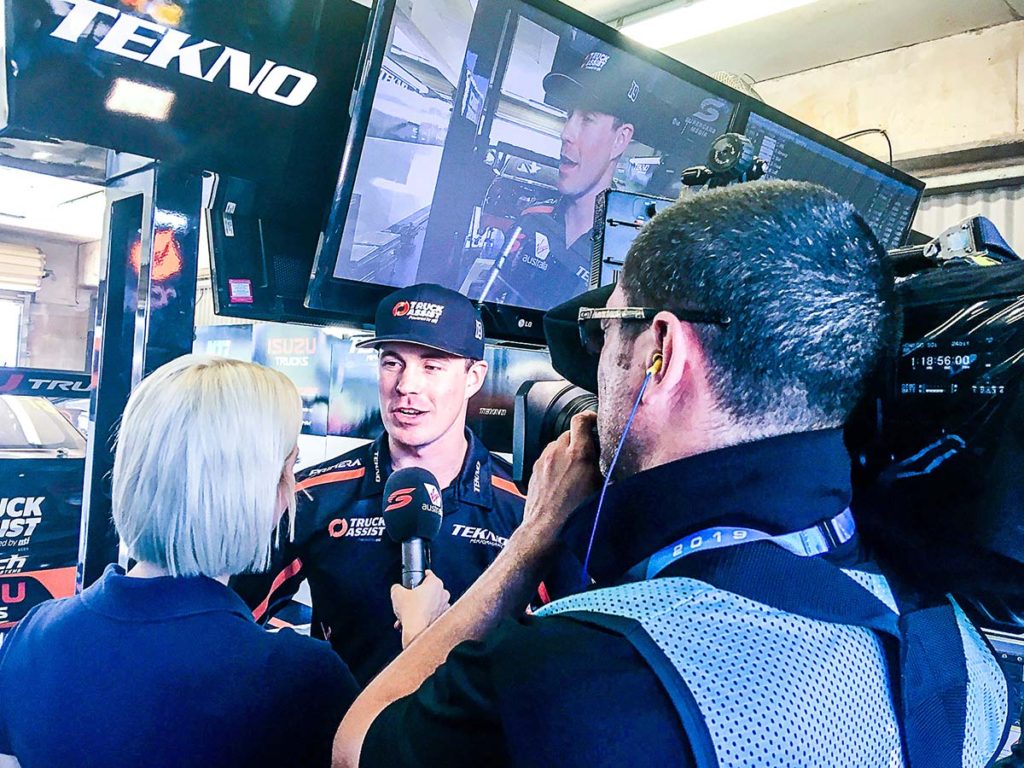
Supercars Media has developed a range of personalities that have delivered a balance of high level insights into the racing, yet spiked the broadcast with entertainment and the ability to have a smile for the viewing audience. Prendergast, Crompton and the on air team are very mindful of the need to balance the commentary and entertainment in some cases to not take the whole business too seriously.
“I think the whole gang are really well connected. If you look at the senior team, there is Mark, Craig, Larko, Greg and me. We have been through the war and popped out the other side. In some cases in full blown combat, which we can all look back and laugh at today. So there is a vast amount of experience there. If you added up the number of races, race wins, poles, Championships – good days, bad days and all the in between experiences plus the network of relationships that has spanned from that it is immense. One of the beauties of that is that the group can go into any garage, any truck, any hospitality area, and have meaningful conversations, sometimes what you learn is not for public dissemination, but I think it comes through in the broadcast that we can pretty much get to things quite quickly,” Crompton says.
“You can’t always have this endless, or bottomless pit of wonderful entertainment. So sometimes you have to find something else to smile at, or laugh at or focus on. We like to have fun but not push it too far. We can think, talk and act like we are a bunch of guys and girls who enjoy each other’s company, have a bit of fun and the banter just like what you would have at a dinner table, or a pub or a club.” Crompton concludes.
The Race Torque asked Nathan Prendergast for his ‘crystal ball’ outlook on the future of Supercars Media broadcasts and it was met with a candid assessment.
“I now see things differently from just inside the truck. Technology is quite ridiculous lately. Just take it back to what you could shoot on your phone not many years ago to what you can shoot now. It is the same in the broadcast industry. So from a technology viewpoint there will always be innovation. Will we go 4K will we not? The next steps are refining what we are good at. Always looking to improve that. The real answer though depends on who our next right deal is with. I think there is universal belief that is a top class product. If there is a criticism of what we do, we are a little too technical, a little too motor sport centric perhaps. I also feel it’s one of our strengths and the reason the product is enjoyed internationally. But we do need to broaden our viewer base a little bit. We need to do more that engages the drivers and their personalities, so it moves to producing other content that makes up for the fact we don’t race every weekend. That will involve documentaries, a mooted reality show. So the next evolution is the refinement of what we do, and then opening up the sport to a wider audience. The locker room stuff.” Prendergast outlined.
Supercars heads for major change in 2021 with a new generation package of rules. The racing calendar too is undergoing surgery and within this period Nathan Prendergast and his team will be looking at their new horizons as well.
Perhaps this may be the most stable outcome of any of the changes the fan base sees in coming years.
